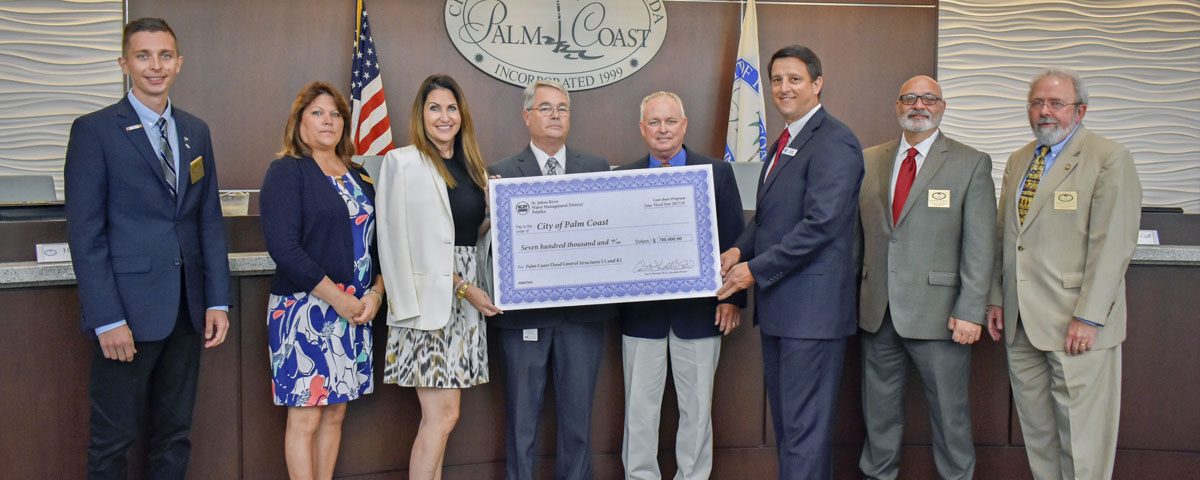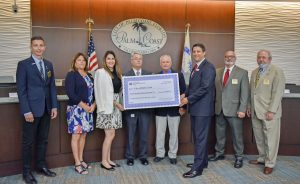District providing $700,000 toward Palm Coast flood control project

Palm Coast Commissioners Nick Klufas and Heidi Shipley, Mayor Milissa Holland, Environmental Compliance Manager Brian Matthews, Stormwater Manager Mike Brennan, SJRWMD Intergovernmental Coordinator Jim Troiano, Commissioners Steven Nobile and Robert Cuff.

Palm Coast Commissioners Nick Klufas and Heidi Shipley, Mayor Milissa Holland, Environmental Compliance Manager Brian Matthews, Stormwater Manager Mike Brennan, SJRWMD Intergovernmental Coordinator Jim Troiano, Commissioners Steven Nobile and Robert Cuff.
PALATKA, Fla., Aug. 17, 2017 — The St. Johns River Water Management District is providing $700,000 in cost-share funds to the city of Palm Coast for a project to rebuild aging flood control structures and allow for remote monitoring and control of the slide gates. The project will help protect residents and property in a 1,739-acre area of the city.
“This project demonstrates how the St. Johns River Water Management District and the city of Palm Coast continue to work together to protect people and property from flooding, which is particularly meaningful with Hurricane Matthew as a recent memory,” said St. Johns River Water Management District Executive Director Dr. Ann Shortelle. “Replacing these 40-year-old weirs will significantly improve flood control and give peace of mind to homeowners during heavy rainfall events. This is a great collaborative project, and I’m proud of our continuing partnership.”
“The St. Johns River Water Management District’s cost-share funding program allows the city of Palm Coast to complete important flood mitigation projects designed to protect lives and property,” said Palm Coast Stormwater Manager Mike Brennan. “The L-1 and K-1 structures have reached their life expectancy, and this funding will allow us to rebuild them now. The city appreciates the Water Management District’s partnership on this critical project, and we look forward to starting work in the coming months.”
The L-1 and K-1 flood control structures were built in the 1970s and will be rebuilt to today’s standards. The L-1 is located near Sentinel Trail, and the K-1 is near September Place, south of State Road 100 in Palm Coast. Both structures provide flood mitigation for the S and U sections of Palm Coast.
Palm Coast has 31 weirs, with 16 of them being control structures with gates and risers that allow the city to lower canal water levels when needed. Stormwater managers typically lower the water levels before major storms or construction projects. The levels are monitored continually and can also be adjusted to maintain water tables to mimic natural conditions and provide additional head pressure for the city’s water well fields.

